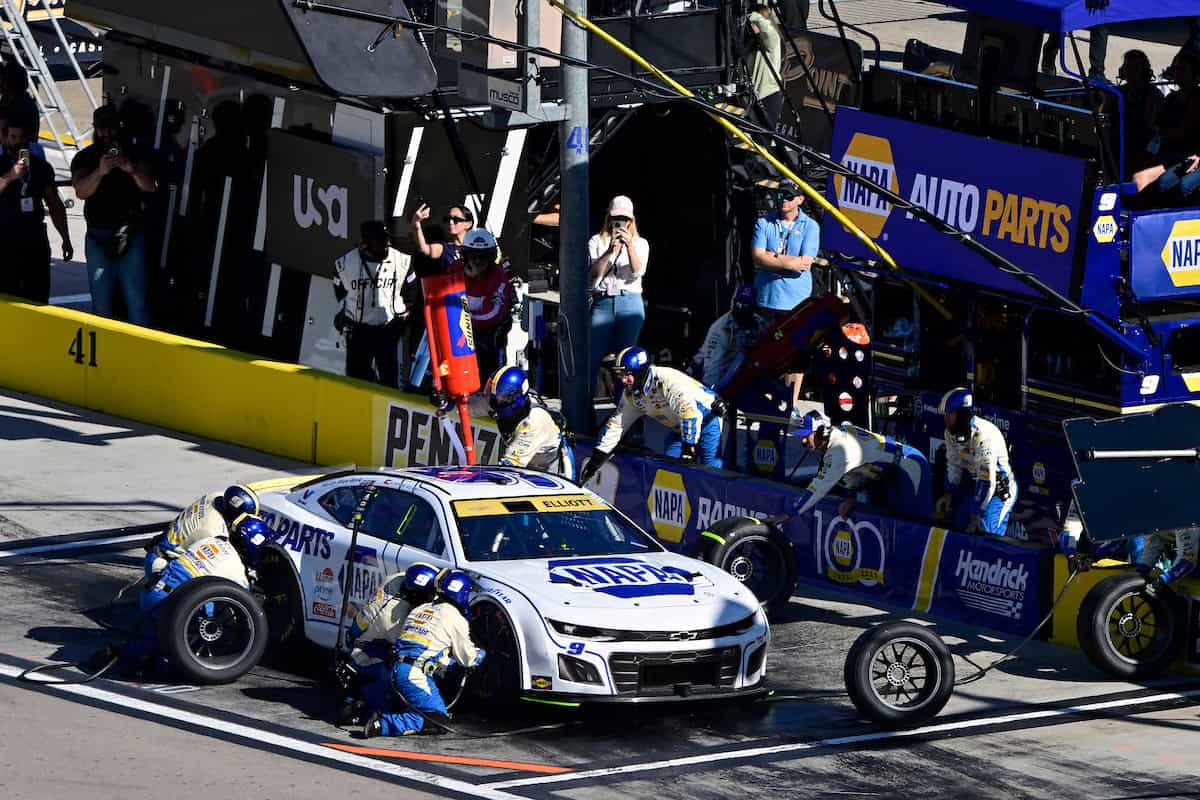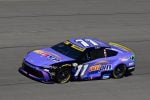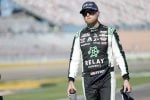Denny Hamlin will get another chance at his first career Cup Series championship.
The driver of the No. 11 Joe Gibbs Racing Toyota punched the first ticket to the Championship 4 by passing teammate Chase Briscoe late to win the South Point 400 at Las Vegas Motor Speedway on Sunday, Oct. 12. The victory is the 60th of Hamlin’s Cup Series career, pushing him into a tie for 10th with Kevin Harvick on the all-time wins list.
In addition to a dramatic 14-lap green flag run to the finish, the first race of the Round of 8 was defined by impactful pit road problems from both playoff and non-playoff drivers. Let’s recap the major pit road plotlines that went down in Sin City.
The Winning Strategy
Las Vegas is a city that is built on gambling and taking chances. With 31 laps remaining, a caution for a crash in turn 4 involving playoff contender William Byron (more on that later) afforded teams one more opportunity to roll the dice on pit strategy.
Four different drivers gained significant track position by taking on just right-side tires on the lap 240, including playoff drivers Briscoe and Joey Logano, who made up the front row for the final restart with 14 laps to go.
While neither two-tire call resulted in a checkered flag, both Briscoe and Logano made a net profit on the strategy calls by their respective crew chiefs James Small and Paul Wolfe.
Briscoe bounced back to finish fourth after losing some track position on a slow early pit stops. As a result, Briscoe who entered Vegas 14 points below the cut line, now exits 15 points to the good.
Logano, meanwhile, finished sixth after being as low as 18th in the final stage. The huge leap in track position brought about by the two-call allowed the driver of the No. 22 Team Penske Ford to basically play to a draw as far as the playoff standings, both entering and exiting Sin City 24 points below the cut line.
In the end, it was a four-tire call by No. 11 crew chief Chris Gayle that won the day as Hamlin expertly drove his way from 10th after the pit stop to first at the end of the day.
No. 9 Team Tripped Up Multiple Times on Pit Road
Unlike Briscoe and Logano, Chase Elliott could not find a way to rebound from early struggles in the No. 9 Hendrick Motorsports Chevrolet.
For Elliott, it was not one, but two pit road botches that set him back on Sunday. On his initial stop of the day on lap 34, Elliott dropped three positions from third to sixth on the pit cycle as he missed his marks and drove too long in the pit box. Elliott maintained the sixth spot through the end of stage one, a small mishap but still one that dropped him outside the top five.
The No. 9 team’s second pit road mishap wound being the costliest for them. On lap 118, the pit crew had a tire get away from them and into the pit stall of Todd Gilliland‘s No. 34 team right in front of them. As a result, the team got penalized for an uncontrolled tire, forcing Elliott to serve a pass-through penalty.
Though Elliott got the free pass at the end of stage two, he never seriously contended in stage three on his way to an underwhelming 18th-place finish. Consequently, Elliott, who entered the Round of 8 14 points below the cut line, now finds himself 23 markers leaving Las Vegas.
“I struggled back there worse than I was hoping to,” Elliott said post-race. “I think just the balance being up front than what it was when I lined up last [after the free pass].”
Ty Dillon’s Miscommunication Dooms William Byron
When it comes to executing a great pit stop, both the pit entry and pit exit are just as important as the pit stop itself. In the case of Byron, it was a botched pit entry by a non-playoff driver that played a key role in ending his day.
On lap 235, Byron slammed into the back of Ty Dillon, who was in the process of entering pit road in his No. 10 Kaulig Racing Chevrolet. The No. 24 Hendrick Motorsports Chevrolet took on heavy damage that forced Byron out of the race, plummeting to 36th in the final running order.
It was clear that a failure to communicate was the culprit of this incident. On the backstretch before slowing down, Dillon did not stick his hand out the window, a universal sign among drivers that they’re slowing down to pit. Dillon thought that his spotter relayed the message to Byron’s spotter.
“That’s kind of how we’ve operated all year is that the spotter will let them know [that we’re pitting],” Dillon said outside the infield care center. “Usually, I rely on the spotter to let everybody know, and my spotter said he let the [No.] 24 spotter know.”
However, that message clearly did not get to Byron himself.
“I didn’t know,” Byron said when asked if he knew Dillon was pitting. “If I would have known or had any indication, I would have hedged higher and not just ran full speed into the back of him.”
The incident leaves Byron, who was four points above the cut line at the beginning of the race, 15 points to the ahead after Las Vegas. It goes to show how one pit road mistake, even by a non-playoff driver, can change the complexion of a team’s championship run.
Look Ahead to Next Week
The NASCAR Cup Series will head back east to the high banks of Talladega Superspeedway for the running of the YellaWood 500 next Sunday, Oct. 19. Green flag will be shortly after 2 p.m., and the broadcast coverage will be on NBC.
At superspeedways like Talladega, moves on track and avoiding the Big One tend to play a bigger role in the outcome than pit road. The biggest pit stop-related factor is that race teams and manufacturers will look to coordinate their groups on and off pit road in order to stay together and not lose the draft.
Andrew Stoddard joined Frontstretch in May of 2022 as an iRacing contributor. He is a graduate of Hampden-Sydney College, the University of Richmond, and VCU. He works as an athletic communications specialist at Eastern Mennonite University in Harrisonburg, Va.





